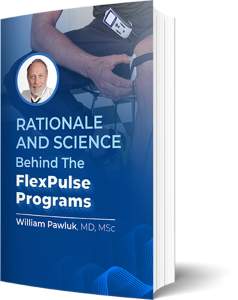Competitive athletes, both professional and amateur, strive to do their very best in every competition. Not only do they give every game/event they’re all, but they also train hard, constantly pushing the limits of what their bodies can do. This intense training can result in injury. Even when it doesn’t, muscles need time for enhancement and recovery, and recovery time eats up valuable training time.
PEMF therapy can be used before and after athletic competition to enhance performance, speed recovery, and help heal injuries when they occur. Professional athletes and top level amateurs, including Olympic athletes, have used PEMF therapy for more than three decades.
PEMF therapy is safe, non-invasive, and not considered to be “doping.” The Sport Journal , popular among athletes, discussed the use of magnetic therapy for athletic performance, and concluded “Whatever the findings or claims, there appears to be no harm from magnetic therapy. This probably makes it attractive to some athletes who are weary of the adverse effects of other products or procedures.”
General benefits of PEMFs
Research has shown that PEMF therapy has many health benefits, including pain relief1, increased circulation2, reducing inflammation3, improving motor coordination4, relaxing muscles, increased cellular repair5, enhancing oxygenation6, promoting quality sleep, and reducing oxidative stress – and that’s just some of them! All of these benefits make PEMF therapy a logical strategy for promoting peak performance and boosting fitness levels in competitive athletes.
Athletes who travel frequently, especially internationally, may experience jet lag and fatigue, both of which can be reduced quickly through the use of PEMFs. Regular use of PEMFs is also beneficial for sleep disturbances. Getting enough quality sleep is essential in order to perform optimally.
Enhancing performance with PEMF therapy
Brain stimulation is acceptable in both Olympic competition and most professional sports. Unlike illegal “doping,” no chemicals are entering the body. Instead, the pulsed electromagnetic fields are using the body’s natural electrical charges to help cells work more efficiently. PEMFs increase energy production, protect against cellular breakdown, and promote cellular healing.
Research has established that PEMF therapy increases energy by stimulating ATP production. PEMFs also work on the nervous system to improve standing balance and better reflexes, promote clear thinking and quick decision making, and improve the condition of joints, tissues, muscles and blood flow. With a clear head and a body ready for action, athletes can perform at the top of their game.
Additional oxygenation of muscles improves the way these muscles perform, and how long they can be activated before tiring. Anecdotally, PEMF therapy has boosted performance up to 70% after just a few weeks of regular use. Among elite athletes, an improvement as little as 1% can make a big difference.
A 2017 review article7 showed that brain stimulation using Transcranial Magnetic Stimulation (a strong pulsed magnetic field applied to the head) seemed to speed motor learning and motor skills during sports activities.
PEMFs and Recovery
On the recovery side, PEMFs reduce lactic acid and swelling in the muscles, helping to relieve soreness more quickly.
Injuries are not uncommon among top athletes, and when injury occurs edema (swelling) results, and tissues don’t receive the necessary oxygen and nutrients. Ice, a common treatment, will reduce surface swelling but doesn’t reach deep inside the muscles to work on swelling there. PEMFs pass through tissues completely, without harm, and reach these internal injuries to help them heal.
When muscles are used for extended periods of time, as in athletic training and competition, they often spasm. Magnetic field therapy reduces muscle spasms by prompting release of nitric oxide. Additionally, PEMFs stimulate a process called myosin phosphorylation, which produces ATP, a critical component of cell energy. Rest restores ATP, which is why it’s recommended after strenuous activity. PEMF therapy helps produce ATP more quickly, thus requiring less recovery time.
Research on PEMFs has shown distinct benefits such as faster recovery from injury and relief of chronic pain. One animal study showed a positive effect on healing rotator cuff injury in rats treated with PEMFs as compared to untreated subjects.8
And in a randomized, double blind trial9 , PEMF therapy had a positive impact on pain relief in subjects with chronic musculoskeletal pain. This is important in keeping athletes, who often experience chronic pain from constant use of muscles and joints, healthy and able to participate fully in their chosen athletic events.
PEMF therapy has also been shown to be helpful in reducing healing time of fractures, positively impacting soft tissue injuries that are commonplace for athletes (such as sprains, tendonitis and strains), and even having a positive impact on healing concussions.
Flexpulse for Sports Enhancement and Recovery
The regular use of a PEMF device can sooth nerves, relax muscles, improve circulation, reduce pain and swelling, and help heal injuries more quickly. While targeted therapy is necessary in the case of specific injuries, regular preventative use of PEMFs can also be a benefit to competitive athletes.
A small, portable, battery operated PEMF device like FlexPulse is ideal for active athletes, especially those who travel a lot. It is lightweight and flexible, and can be used both for specific issues throughout the body, and to treat the brain for regular general health maintenance.
Using PEMF therapy as a preventative measure keeps muscles functioning as they should, maximizing athletic performance. Many professional and Olympic athletes already know this and use PEMF therapy routinely in their training and recovery.
For athletes, investment in a PEMF system is wise since it can be used for so many different applications. Having a PEMF device means you’re already prepared if injury occurs, and you’re better able to prevent injury in the first place.
The FlexPulse PEMF device is a powerful, wearable device that can be applied while on the go. Six preset programs range in frequency from 3 Hz to 1000 Hz promote brainwave entrainment and deep healing to help keep athletes in the game!
References:
1 . Sutbeyaz S, Sezer N, Koseoglu F, Kibar S. Low-frequency pulsed electromagnetic field therapy in fibromyalgia: a randomized, double-blind, sham-controlled clinical study. Clin J Pain. 2009;25(8):722-728. [PubMed]
2. Rikk J, Finn K, Liziczai I, Radák Z, Bori Z, Ihász F. Influence of pulsing electromagnetic field therapy on resting blood pressure in aging adults. Electromagn Biol Med. 2013;32(2):165-172. [PubMed]
3. Aragona S, Mereghetti G, Lotti J, Vosa A, Lotti T, Canavesi E. Electromagnetic field in control tissue regeneration, pelvic pain, neuro-inflammation and modulation of non-neuronal cells. J Biol Regul Homeost Agents. 2017;31(2 Suppl. 2):219-225. [PubMed]
4. Jensen B, Malling A, Morberg B, Gredal O, Bech P, Wermuth L. Effects of Long-Term Treatment with T-PEMF on Forearm Muscle Activation and Motor Function in Parkinson’s Disease. Case Rep Neurol. 2018;10(2):242-251. [PubMed]
5. Osera C, Amadio M, Falone S, et al. Pre-exposure of neuroblastoma cell line to pulsed electromagnetic field prevents H2 O2 -induced ROS production by increasing MnSOD activity. Bioelectromagnetics. 2015;36(3):219-232. [PubMed]
6. Ehnert S, Fentz A, Schreiner A, et al. Extremely low frequency pulsed electromagnetic fields cause antioxidative defense mechanisms in human osteoblasts via induction of •O<sub>2</sub><sup>-</sup> and H<sub>2</sub>O<sub>2</sub>. Sci Rep. 2017;7(1):14544. [PubMed]
7. Gazerani P. Performance Enhancement by Brain Stimulation. J Sports Sci Med. 2017;16(3):438-439. [PMC]
8. Huegel J, Choi DS, Nuss CA, et al. Effects of pulsed electromagnetic field therapy at different frequencies and durations on rotator cuff tendon-to-bone healing in a rat model. J Shoulder Elbow Surg. 2018;27(3):553–560. doi:10.1016/j.jse.2017.09.024
9. Thomas AW, Graham K, Prato FS, et al. A randomized, double-blind, placebo-controlled clinical trial using a low-frequency magnetic field in the treatment of musculoskeletal chronic pain. Pain Res Manag. 2007;12(4):249–258. doi:10.1155/2007/626072.

